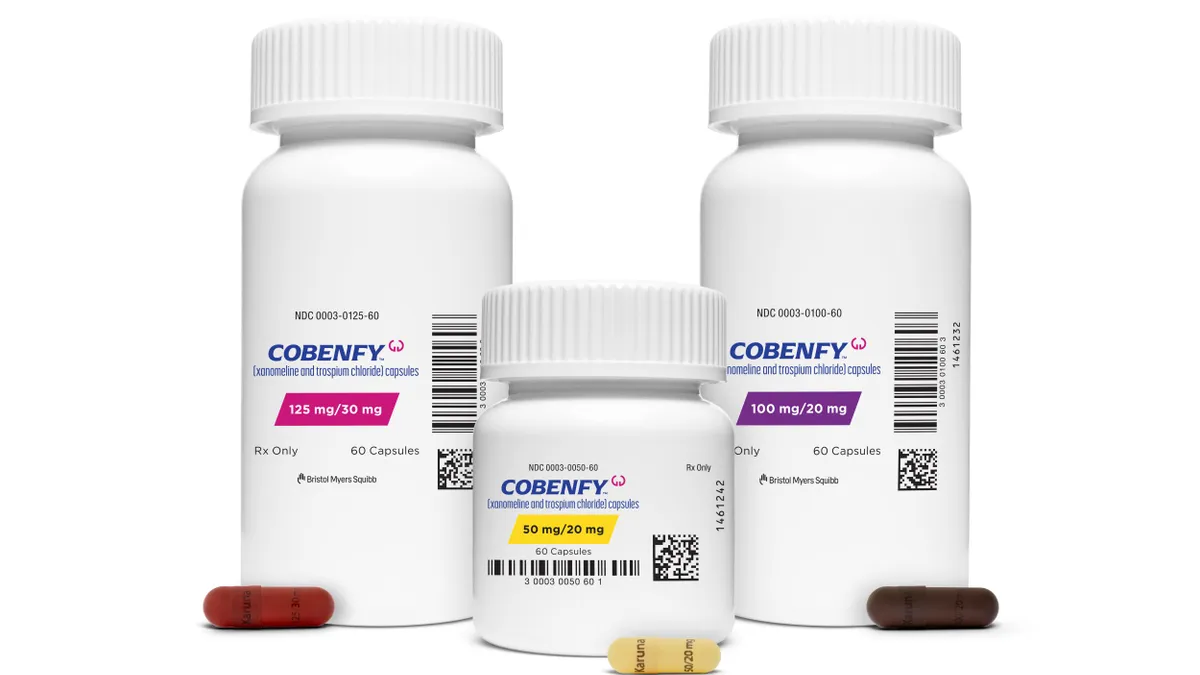 When Pfizer wanted to engage with people living with chronic pain, it used an online crowdsourcing model and social media campaign that connected thousands of people, from patients and caregivers, to nurses and doctors.
When Pfizer wanted to engage with people living with chronic pain, it used an online crowdsourcing model and social media campaign that connected thousands of people, from patients and caregivers, to nurses and doctors.
In what was the first initiative of its kind by a pharmaceutical company, Pfizer collaborated with patient advocacy groups to launch a photo-sharing initiative using Flickr and encouraged chronic pain patients to share photos representing their pain and to tell their stories. The campaign also used Facebook, Twitter, and a social cause site Care2 to empower patients to share their feelings using their preferred channels. Patient advocacy groups partnering with Pfizer integrated the campaign’s social media channels as widgets onto their own websites and digital platforms to give the initiative maximum reach among patients.
Pfizer’s approach was a break from convention for pharma in the digital environment because it was not designed to attract patients to a campaign website, but rather to engage them via the social media channels they were already using.
While the pressure is on physicians to engage patients through digital means (see digital bonus copy on Meaningful Use and proposed changes to the requirements), pharmaceutical and biotechnology companies also need to get in the game of using technology to improve patient engagement.
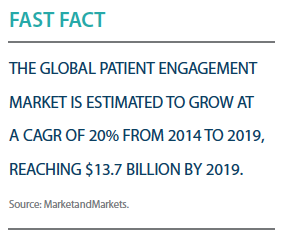 Pfizer is continuing its efforts to drive better patient engagement, and patient engagement — not surprisingly — needs to center on patients, their needs, and their behaviors, according to Vera Rulon, director, external medical communications, Pfizer Medical, Pfizer. However simple that concept may seem, the industry has been product-centered for a long time, and has been slow in shifting gears to be truly patient-centric.
Pfizer is continuing its efforts to drive better patient engagement, and patient engagement — not surprisingly — needs to center on patients, their needs, and their behaviors, according to Vera Rulon, director, external medical communications, Pfizer Medical, Pfizer. However simple that concept may seem, the industry has been product-centered for a long time, and has been slow in shifting gears to be truly patient-centric.
“To drive patient engagement we must include patients and caregivers in development of any solution, treatment, or digital strategy that is to be patient-centric," Ms. Rulon says. “Often, new products are created or healthcare delivery process changes without incorporating patient input. This can lead to a solution that is not helpful to patients."
Creation Healthcare developed that first successful engagement campaign for Pfizer by conducting a comprehensive analysis of social media conversation taking place among patients and caregivers in public social media, so that the company could understand how patients talk about their pain and the channels they use. By sharing these insights with patient advocacy partners, the agency was able to design a campaign tailored to patient engagement behaviors and unmet needs.
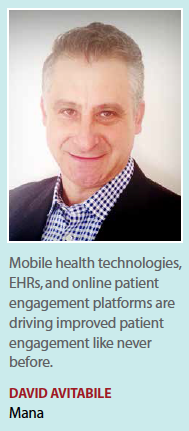 “For pharma to successfully engage with stakeholders online, whether they are patients, caregivers, or nurses and doctors, it is essential to first understand the current digital behaviors of those stakeholders," says Daniel Ghinn, founder of Creation Healthcare. “In Pfizer’s initiative, by listening to patients first, we were able to shape engagement around those patients’ needs and help Pfizer create a campaign that advocacy groups were proud to be part of."
“For pharma to successfully engage with stakeholders online, whether they are patients, caregivers, or nurses and doctors, it is essential to first understand the current digital behaviors of those stakeholders," says Daniel Ghinn, founder of Creation Healthcare. “In Pfizer’s initiative, by listening to patients first, we were able to shape engagement around those patients’ needs and help Pfizer create a campaign that advocacy groups were proud to be part of."
Ms. Rulon says it is easy for the industry to forget that there is more to a person’s well-being than a pill they may take for their condition. There are many aspects, such as social factors and quality of life, that must be considered when developing a therapy.
“Most importantly, we need to understand what patients’ expectations are and what good outcomes mean to them," she says. “There really is no one strategy for driving patient engagement; it’s a combination of listening to patients, leveraging digital communications, and finding solutions and treatments that meet their needs."
Defining expectations can only come from a thorough investigation of each step of the patient’s involvement, says Kathleen Bonetti, VP of marketing, Rx Edge. There are many opportunities to engage the patient along the various stages of treatment decision and beyond. Once these have all been identified, each place can be a rich and significant touch for patient engagement. This can be challenging, because the stages are not so much a linear progression as they are a process with multiple twists, turns, falling back, moving forward.
“In spite of those challenges, there is an opportunity to meaningfully connect with patients at every juncture," Ms. Bonetti says. “That means creating strategies that are based on reaching patients when and where they are searching for solutions, motivated to take action, want education and information, and are willing to focus attention."
Patient engagement and medication adherence are key drivers for pharmaceutical market success, says Tracy Foster, president of Lash Group, a part of AmerisourceBergen. With 22% of U.S. patients taking less of the medication than is prescribed, the industry needs to get to the bottom of what is causing patient drop-off. Next, says Ms. Foster, the industry needs to identify who is at risk for medication non-adherence and determine how best to reach those patient types, for example a spectrum of reminder devices, digital tools, mobile apps, personalized telehealth interactions, refill synchronization, etc.
“Based on that information, then we can determine the best strategy forward," she says. “The goal is to build on foundational marketing 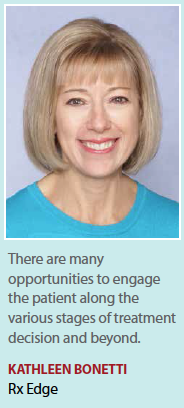 approaches designed to maximize awareness and access and then develop adherence and engagement strategies to address patient-specific barriers that achieve optimal health outcomes."
approaches designed to maximize awareness and access and then develop adherence and engagement strategies to address patient-specific barriers that achieve optimal health outcomes."
Patient engagement solutions should incorporate a patient’s real-world behavioral needs and facilitate the skills and motivation necessary to optimally self-manage a condition on a daily basis. Additionally, programs need to go beyond a one-way push or collection of information, says Jessica Brueggeman, senior VP, health behavior group, MicroMass Communications.
“To be relevant in value-based care, life-science companies must deliver the best outcomes at the lowest possible cost and a successful strategy for patient engagement will leverage evidence-based approaches that go beyond a disease-centric or clinical perspective," she says. “Programs should offer interactive, skill-building experiences that leverage health coaching and motivational interviewing techniques to support patients in reaching their personalized health goals."
Some of the drivers that are pushing the industry toward more patient-centric engagement include the fact that patients as general consumers are experiencing customer service practices in other industries that tailor to their specific needs and behaviors — think Amazon. Patients expect that same experience from the healthcare industry. Also, the recent government-driven initiatives to get patients involved with their own healthcare by having access to their medical records and improving access to health insurance are creating more empowered patients. But most importantly, the technology is now available to make this all happen easily and seamlessly.
“Technologies such as automated services and Web portals offer a safety net, and high-touch services close the gap to ensure patients get the healthcare support they need," Ms. Foster says. “Empowering patients to be engaged in the process and to use a model that leverages both high-tech and high-touch approaches provides an important and intelligent balance and allows for the ability to provide coordinated care through a model that will continue to be relevant."
Bringing a holistic understanding of the patient’s journey together with new possibilities enabled by advances in digital technology, such as augmented reality and remote patient monitoring, will create a new set of breakthroughs in patient engagement, according to Greg Rotz, partner, Strategy&.
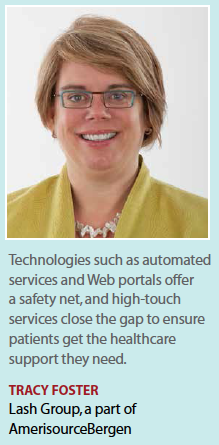 “Our research has shown those patients who are most committed to their treatments have three things in common: their condition matters to them, they take it seriously; they value their doctor’s recommendations; and they believe their treatment is making a difference," Mr. Rotz says. “These three commonalities can be turned into standards for defining a good patient engagement strategy."
“Our research has shown those patients who are most committed to their treatments have three things in common: their condition matters to them, they take it seriously; they value their doctor’s recommendations; and they believe their treatment is making a difference," Mr. Rotz says. “These three commonalities can be turned into standards for defining a good patient engagement strategy."
Therefore, an effective patient engagement strategy will have a compelling approach for helping the patient understand the importance of his or her condition, he adds, and it should also help to ensure the physician-patient interaction is an experience that builds commitment. And most importantly, the strategy needs to create positive patient experiences, including transparency on what results to expect by when and how to know if the treatment is working.
“Mobile health technologies, electronic health records, and online patient engagement platforms are driving improved patient engagement like never before," says David Avitabile, founder, Mana. “I think technology, more than anything else, is the most successful pathway."
And with Apple’s HealthKit now coming online, the industry has entered the era of Patient Engagement 3.0, especially when it comes to life-sciences companies being able to connect directly with patients to collect data, conduct research and evaluate outcomes, he says. (For more about HealthKit and how it is shaping clinical trials, read Wearables in Clinical Trials in this issue.)
Despite HIPAA and other data security concerns that may arise from all the data living in the cloud, Mr. Avitabile doesn’t see the risk as a major hurdle for digital and mobile health and expects the industry will adapt, much like the financial services and banking industries have adjusted to overcome data breaches.
“Technology allows us to extend care offerings and not simply communicate across more channels, including mobile, but to offer more  personalized content and support," says Matthew Stumm, principal, creative and media strategy, BBK Worldwide. “The most effective engagement strategy is a multi-channeled approach and one that addresses the needs of all stakeholders — patients, caregivers, and providers."
personalized content and support," says Matthew Stumm, principal, creative and media strategy, BBK Worldwide. “The most effective engagement strategy is a multi-channeled approach and one that addresses the needs of all stakeholders — patients, caregivers, and providers."
The right communications can alter or change behaviors and encourage better ones — and engaging on topics that include health, lifestyle, and general wellness is mutually beneficial for all involved. Beyond-the-pill approaches offer value beyond the medicines themselves and treating patients effectively is critical to addressing rising healthcare costs.
“The upside is that doing right by patients is not only the right thing to do, but it also is very good business," Mr. Stumm says.
While the ability to engage patients more holistically is rich with opportunity to increase medication adherence and create benefits for both pharma and patients, payers are also coming onboard to this approach. Interest is growing for initiatives targeting specific therapeutic areas, including oncology, MS, and rheumatoid arthritis.
“Market research conducted by Xcenda, a part of AmerisourceBergen, shows growing payer interest in manufacturer adherence and patient engagement initiatives," Ms. Foster says. “When asked if they would be willing to partner with a manufacturer to provide services to high-risk populations within their plans to improve and report on compliance and persistency, nearly half of payers participating in the survey said they would have interest in such programs."
Increasing Importance of Patient Engagement
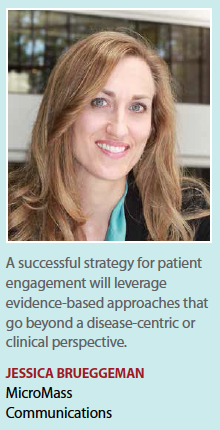 Although the concept of patient engagement has been around for years the capabilities of technology, the increased knowledge and empowerment of patients, and the goal to decrease healthcare costs through improved patient compliance and adherence are all creating a new and more crucial role. The principle of connected patients has evolved, although not always clearly, and will continue to drive efficiencies within the healthcare system.
Although the concept of patient engagement has been around for years the capabilities of technology, the increased knowledge and empowerment of patients, and the goal to decrease healthcare costs through improved patient compliance and adherence are all creating a new and more crucial role. The principle of connected patients has evolved, although not always clearly, and will continue to drive efficiencies within the healthcare system.
“The way we communicate and share information has changed profoundly with the increased use of digital and mobile technology," Ms. Rulon says. “The best solution to bettering the healthcare delivery system is to improve communication between patients, caregivers, and their providers, including new sources of data to inform them in shared decision-making."
This is especially valuable when it increases adherence to medications. In the United States alone, nonadherence is estimated to cost the healthcare system between $100 billion and $289 billion a year, according to an Agency for Healthcare Research & Quality study.
“Mobile health technologies provide an opportunity to help improve adherence rates, but not without the patient’s involvement and commitment in using these tools," Ms. Rulon says. “As patients continue to be more aware and incentivized to use new tools to achieve their healthcare goals, we have a greater opportunity to improve adherence: a well-informed patient is more likely to take action on his or her health."
The industry has yet to gain confidence in how well patient engagement works, Ms. Brueggeman says, characterizing it as “a cloudy concept in pharma." In reality however, the work of behaviorist Judith Hibbard demonstrates a direct link between patient engagement and improved clinical and economic outcomes.
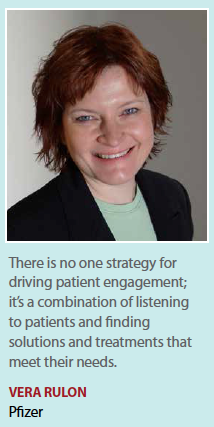 “These empirical data establish a business case for patient engagement that has attracted attention from many stakeholders, including payer and provider organizations seeking innovative ways to improve outcomes and lower costs," she says.
“These empirical data establish a business case for patient engagement that has attracted attention from many stakeholders, including payer and provider organizations seeking innovative ways to improve outcomes and lower costs," she says.
Despite the lack of clarity around the business benefit, both pharma companies and physicians are starting to use wearables, personal devices, mobile apps, and patient portals to communicate with the patient.
“While this new world order presents some additional challenges, these new technologies and data streams allow us to know more throughout the entire treatment process, which is all critical to improving patient engagement, finding better medicines and achieving better patient outcomes," Mr. Stumm says. “Effective healthcare communications have always played an important role, but today’s health-conscious, digital consumer demands thoughtful and consistent communications and prefers content that is delivered across multiple devices and channels. And we know that a more engaged consumer is almost always a healthier consumer."
One of the biggest changes over the years is that patient engagement is no longer a one-way street where 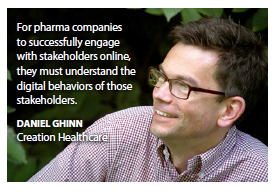 patients get on board at the appropriate time and pharmaceutical brands start connecting with them from that point. Instead, patients are doing their own engaging and on their own terms. Gone are the days of automatically following doctor’s orders, Ms. Bonetti says. People are now researching medications, learning more about conditions on their own, seeking increased value, and expecting personalized experiences that are relevant to their own particular situation.
patients get on board at the appropriate time and pharmaceutical brands start connecting with them from that point. Instead, patients are doing their own engaging and on their own terms. Gone are the days of automatically following doctor’s orders, Ms. Bonetti says. People are now researching medications, learning more about conditions on their own, seeking increased value, and expecting personalized experiences that are relevant to their own particular situation.
“Importantly, they normally do not want to engage with pharmaceutical products or be confronted with information about drugs and illness unless they or a loved one have a need in the form of symptoms, general concerns, or a current known condition," she says. “Only then will they take notice and only then will purposeful engagement take place."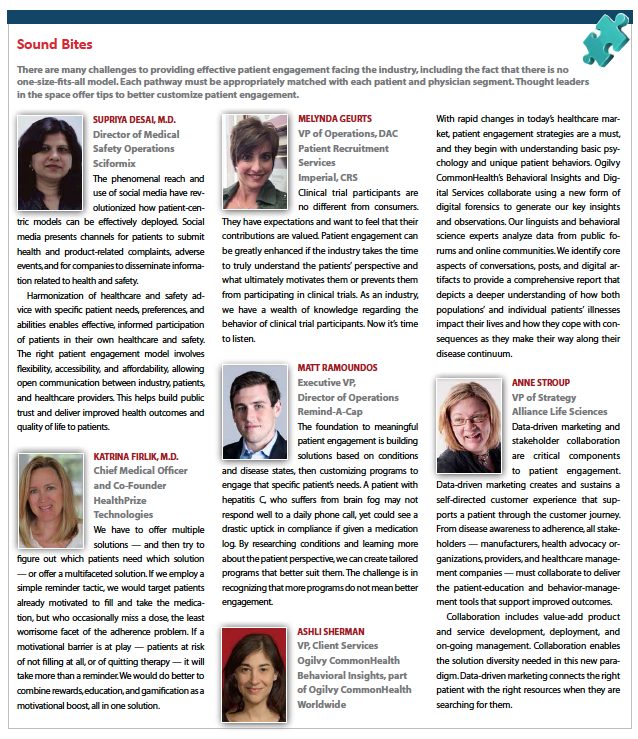
The deployment and adoption rates of technology such as ePrescribing, ePrior Authorization, and EMR/EHR integration will significantly increase the time providers can spend on patient care, and reduce the industry’s reliance on manual and time-consuming processes, Ms. Brueggeman says.
As the healthcare landscape continues to evolve, manufacturers will need to provide support services that result in a higher level of patient engagement. Technology and automated services make the process more efficient and easier for patients to stay connected.
“Pairing automation with high-touch approaches to interaction with patients ensures that we are reaching them on multiple levels to empower the patient and encourage behavioral changes that may result in continued adherence and successful health outcomes," Ms. Brueggeman says.
As the result of the Affordable Care Act, patients are paying a much larger percentage of their own healthcare costs than ever before and because of this, they will become more engaged.
“Value becomes much more of a priority when self-interest is involved," Mr. Avitabile says. “We’re starting to see a similar shift with regard to value-based pricing models driving greater physician engagement. When reimbursement is tied to certain objectives being met, and treatment outcomes being achieved, the importance of value, rather than volume, increases exponentially, and everybody becomes far more engaged."
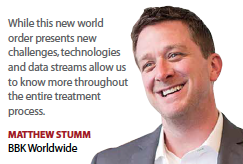 With the increase of patients paying for their own care, healthcare is becoming more of a retail market, Mr. Rotz says. By 2020, 45% of employees will be in high deductible health plans vs. 26% today. An increasing number of individuals are shopping for their own health plan on public and private exchanges.
With the increase of patients paying for their own care, healthcare is becoming more of a retail market, Mr. Rotz says. By 2020, 45% of employees will be in high deductible health plans vs. 26% today. An increasing number of individuals are shopping for their own health plan on public and private exchanges.
“The consumerization of healthcare is here to stay," he says. “This means we can expect patients to change how they seek healthcare.For example, patients will increase their use of lower-cost settings of care, such as retail minute-clinics, and they will increase their expectations for cost-effective therapies that demonstrate results quickly."
Strategy&’s recent research survey shows pharma companies are making many investments to improve patient engagement, such as above-brand services and new digital tools. However, executives report mixed results of these programs thus far, including real disappointment in areas like digital.
“To deliver better results, leaders in this space will take a step back to re-imagine the patient experience, then follow through with the offerings and capabilities that will truly make a difference for the patient," Mr. Rotz says.
For bonus content go to bit.ly/PV0615-PatientEngagement









